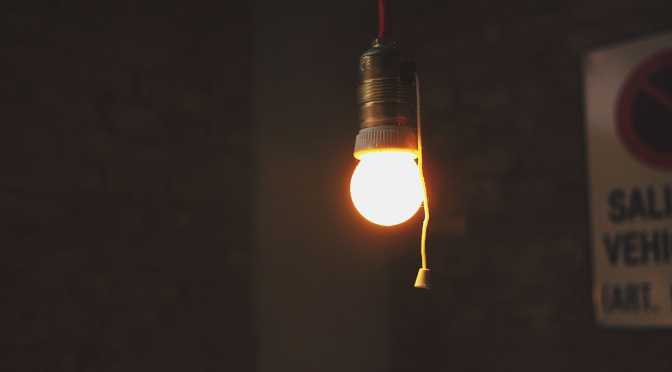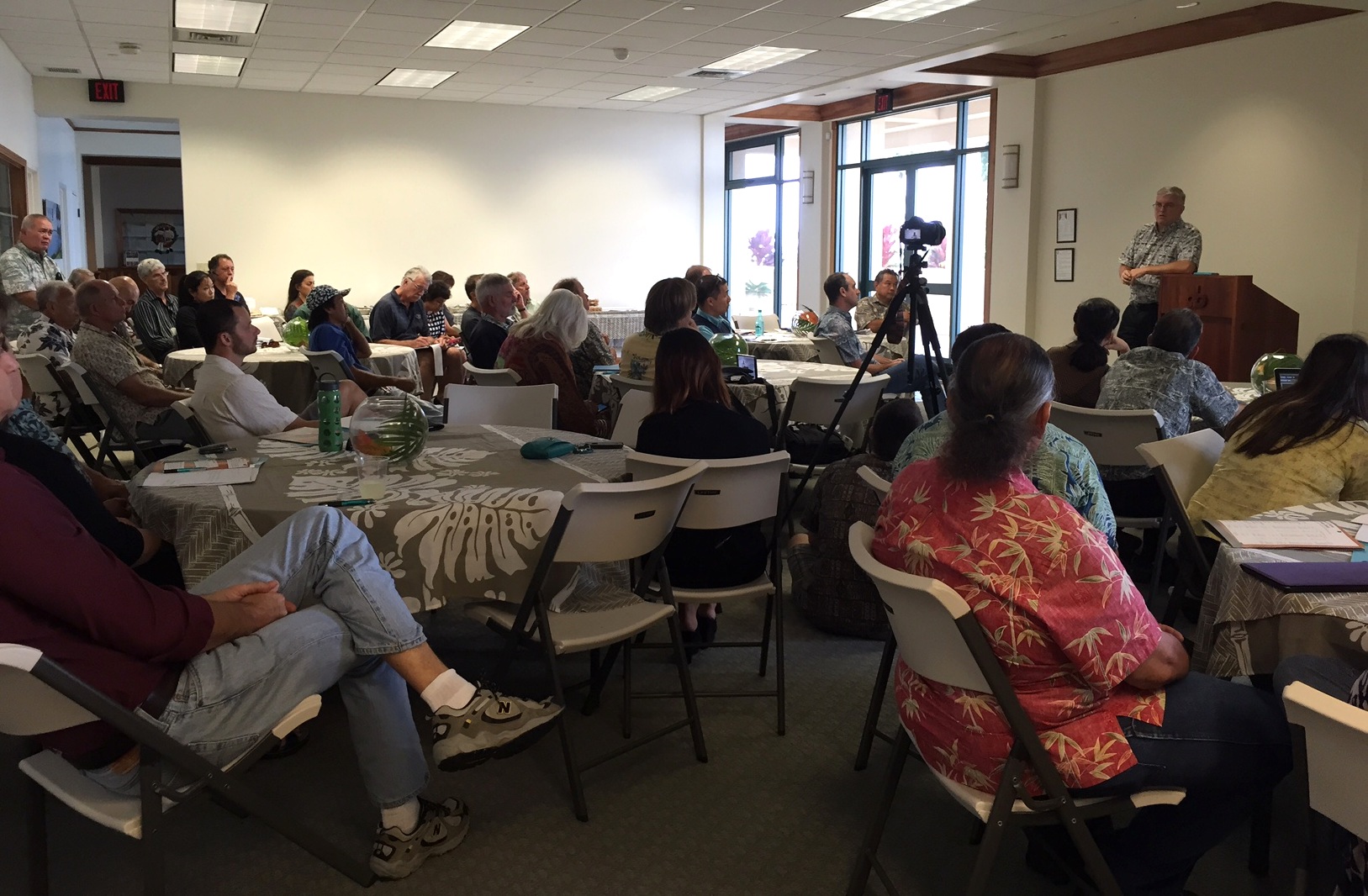Richard Ha writes:
The Hawaii Island Energy Cooperative (HIEC) has gotten quite a bit of press coverage in the past few days. Last week, we submitted an application to the PUC to intervene in the pending sale of Hawaii Electric Industries (HEI) to NextEra Energy.

Our HIEC spokesman Marco Mangelsdorf answers some questions about it just below. Following his answers, you can see excerpts from and links to newspaper articles about HIEC from the Honolulu Star-Advertiser, the Hawaii Tribune-Herald, Pacific Business News, and Honolulu Civil Beat.
FREQUENTLY ASKED QUESTIONS
Provided by Marco Mangelsdorf, director and spokesman for HIEC, President, ProVision Solar, Inc.
What’s my connection to HIEC?
I was invited by Richard Ha, business owner of Hamakua Springs and community leader, to get involved with a group of Big Island residents who were interested in exploring the possibility of emulating the Kauai Island Utility Cooperative model established on Kauai. We are seeking to get a seat at the table in the Hawaiian Electric Industries-NextEra docket by proposing an option, depending on the course of the proceedings, that offers the possibility of democratic ownership and control of the island’s energy infrastructure, through a duly elected board, to the residents and communities of the Big Island.
Are you doing this because you see the end of the PV industry in the state? Are you leaving your company?
I will continue to manage ProVision Solar as the solar electric industry in the state continues to adapt to the unique challenges in our Aloha State. Solar PV will continue to be a major part of the Hawaii’s efforts to become more energy independent for years and decades to come.
Do you see any conflict between continuing to be at ProVision and working with HIEC?
I see congruence between what I’m doing in my business to empower Big Island homes and businesses as far as promoting energy independence and working toward greater local control of the island’s energy infrastructure.
Is HIEC against the proposed merger?
HIEC takes no position either for or against the proposed merger. HIEC desires to explore through the proceedings the unique perspective, goals and objectives of the residents and communities of Hawaii Island, and depending on the outcome of the proceedings, consider whether a different ownership model for energy services on Hawaii Island may provide a positive alternative. A sound discussion should include evaluation of the pending transaction in relation to potential future options that may be in the public interest for the unique interest of the island of Hawaii. HIEC’s participation can assist the development of a sound record by providing a Hawaii Island focused perspective.
Is HIEC making an attempt to buy HELCO?
It’s important to note that HELCO is not for sale at this time. So no, HIEC is not submitting an offer to purchase HELCO. HIEC is positioning itself as a possible option worthy of consideration to take Hawaii Island in a different energy direction, depending on the course of the proceedings.
Would a coop lead to lower energy bills on the Big Island?
HIEC believes that a case can be made that there would be lower energy costs to the consumer over time through tax exempt status, lower cost of capital and no shareholder profits, greater efforts to develop less expensive island-based power sources, promotion of education, markedly improved energy efficiency, and the accelerated adoption of appropriate advanced technologies.
What’s the position of HIEC regarding geothermal energy?
The residents and communities of the Big Island, through an elected board of directors, would decide what choices and directions to take as far as energy sources and policies under the coop.
What’s the position of HIEC regarding a interisland power cable from the Big Island to the other islands?
The residents and communities of the Big Island, through an elected board of directors, would decide what choices and directions to take as far as energy sources and policies under the coop.
What’s the position of the HIEC regarding this or that particular or specific issue on the Big Island?
The residents and communities of the Big Island, through an elected board of directors, would decide what choices and directions to take as far as energy sources and policies under the coop.
What would make HIEC different from a standard electric utility coop?
The cooperative would have a more diversified focus compared to a standard electric utility by focusing on greater overall energy independence, higher renewable energy generation, and enhanced sustainability through a comprehensive and integrated approach to all energy-consuming sectors on the island.
Has HIEC been working with Kauai Island Utility Cooperative?
HIEC has been in contact with KIUC and they have been supportive. In the event that HIEC is successful in establishing an energy coop, it is likely that synergies would exist between the two islands that would enable both to benefit by working together in certain areas.
From the Honolulu Star-Advertiser:
By Susan Essoyan
The Hawaii Island Energy Cooperative is seeking a seat at the table as the Public Utilities Commission considers the proposed merger of Hawaiian Electric Industries and NextEra Energy.
The new nonprofit cooperative association, registered with the state Feb. 9, was formed by business and community leaders to explore the possibility of creating an energy co-op on Hawaii island.
The Hilo-based co-op filed a motion Feb. 11 to intervene in the Public Utilities Commission docket on the proposed $4.3 billion merger between NextEra and HEI. But it is not taking a position for or against the deal, according to Marco Mangelsdorf, spokesman and a director of the co-op.
Instead, it hopes to ensure that commissioners consider the island's energy needs and the potential benefits of a cooperative model of utility ownership during their deliberations. Read the rest
From the Hawaii Tribune-Herald:
By Colin M. Stewart
What if Hawaii Island residents owned their own electric utility?
That’s the question being posed by a nonprofit group that filed on Feb. 11 a motion with the Hawaii Public Utilities Commission to intervene in the pending $4.3 billion sale of Hawaii Electric Light Co’s parent company, Hawaiian Electric Co. (HEI), to NextEra Energy.
The Hawaii Island Energy Cooperative is a group of Big Island community and business leaders exploring the idea of public ownership, according to group spokesman and director Marco Mangelsdorf.
“We seek to participate in the discussion of the unique perspective of the residents of our island, and, if appropriate, explore an option that would make for a fundamental change in the landscape of energy production and consumption on Hawaii Island,” he said via a press release. “Being able to have more direct control over Hawaii Island’s present and future energy profile would provide us with an extraordinary opportunity to showcase what can be done on our island on many different and innovative levels.” Read the rest
From the Pacific Business News:
By Duane Shimogawa
A group of community and business leaders on the Big Island have formed an organization to explore the potential benefits of a community-based cooperative ownership structure similar to the Kauai Island Utility Cooperative, and they want a closer look into NextEra Energy's $4.3 billion acquisition of Hawaiian Electric Co.
The Hawaii Island Energy Cooperative recently filed paperwork to intervene in the Hawaii Public Utilities Commission docket on the proposed acquisition, which involves HECO's Big Island subsidiary, Hawaii Electric Light Co. Read the rest
From Honolulu Civil Beat:
By Sophie Cocke
Big Island business and community leaders have formed a nonprofit coop called the Hawaii Island Energy Cooperative to explore taking over Hawaii Electric Light Co., a subsidiary of Hawaiian Electric Co.
The co-op would be owned by ratepayers, similar to the Kauai Island Utility Cooperative. However, the co-op is interested all of the island’s energy sectors not just the electric grid.
The co-op association emerged in recent weeks with the announcement that Florida-based NextEra Energy has entered into an agreement to purchase HECO — a deal that is expected to close by the end of the year. Last week, the Hawaii Island Energy submitted an application to Hawaii’s Public Utilities Commission, which must approve the sale, to intervene in the review of the merger. Read the rest







